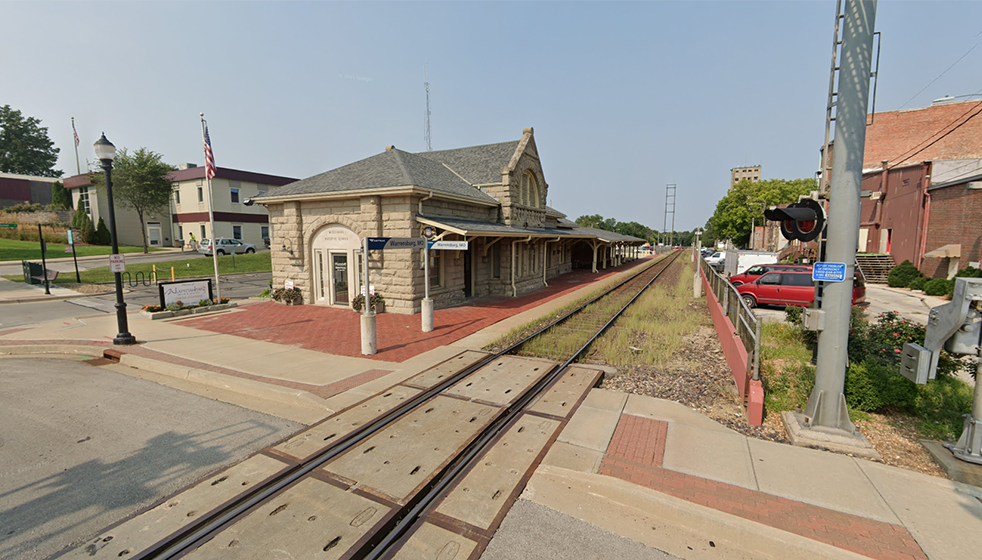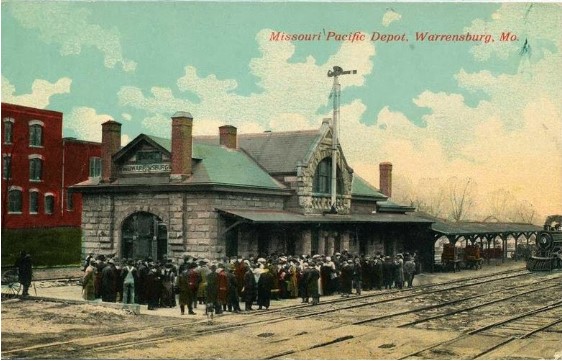The Pacific Railroad obtained a 1849 charter for a rail line to run between St. Louis and a site in the western part of the state, with the aspiration of building to the Pacific Ocean. Ground was broken in St. Louis in 1851. Using rails, locomotives, and rolling stock shipped from England, the first five mile section of the road opened in 1852. Work was intermittent during the Civil War, but by July 1864 the rails had reached Warrensburg. The original Train Depot in Warrensburg was built in 1864 and it stood until February 1889 when it went up in flames and was subsequently replaced by the present station you see today.
In 1872, a reorganization of the railroad resulted in a name change to the better-known Missouri Pacific Railway, and more than a century later it was subsumed into the Union Pacific Railroad.
The placement of the depot east of the original downtown, “Old Town,” caused the principal merchants to relocate their businesses around the station, effectively shifting the whole town a few blocks to “New Town”. The railroad was constructed along the natural topography of the landscape which created a separation between existing towns like Warrensburg and the new railroad. In anticipation of the railroad, property owners platted new subdivisions to attract businesses and residents to move closer to the railroad.








